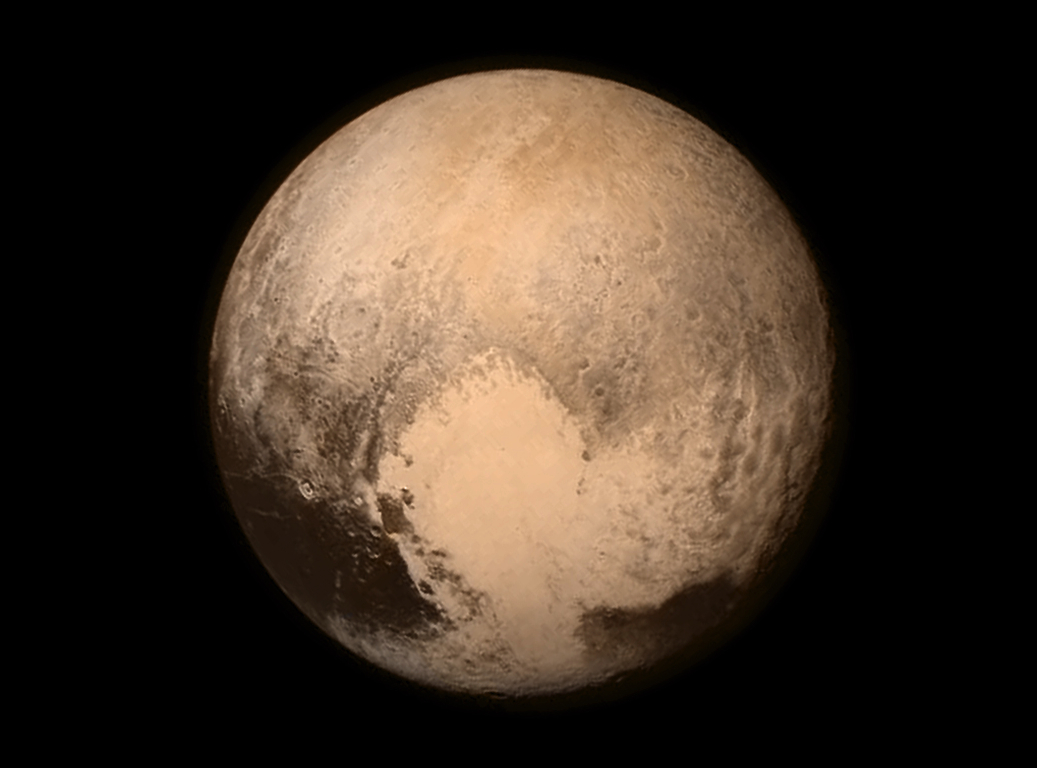What we can learn from New Horizons
NASA’s spacecraft finally flew past Pluto last week and made some startling discoveries
Hanneke Weitering • July 19, 2015

NASA’s New Horizons spacecraft took this photo of Pluto on July 13, 2015, when it was just 476,000 miles away from the ex-planet and preparing for its closest approach. [Image credit: NASA/APL/SwRI]
Nine years after losing its planetary status, Pluto is back in the spotlight. New Horizons, a spacecraft launched just six months prior to Pluto’s demotion, flew by the dwarf planet on July 14, giving the world an up-close and personal view of the most controversial body in the Solar System.
The New Horizons team has completed its nine-day close surveillance period, which means the mission scientists are finished with Pluto’s photo shoot. But it will take a full year for them to retrieve all their data and begin to really analyze the world’s favorite dwarf planet in detail. Meanwhile, the spacecraft that made it all possible continues to drift closer and closer to the edge of the solar system.
New Horizons’ unprecedented, high-res images of Pluto revealed its enormous heart, an approximately 1,000-mile-wide, featureless region dubbed Tombaugh Reggio in tribute to Pluto’s discoverer Clyde Tombaugh. Inside the heart, scientists discovered frozen plains covered in fascinating patterns and carbon monoxide ice, which could mean that convection on Pluto might be actively shaping its surface. The plains look a bit like the dried, cracked mud that can be found on Earth’s surface, with 12-mile-wide contiguous, irregular shapes.
![Close-up images of Pluto's equator reveals mountains that are far taller than expected. [Image credit: NASA/JHUAPL/SwRI]](https://scienceline.org/wp-content/uploads/2015/07/nh-plutosurface-640x456.png)
Close-up images of Pluto’s equator reveals mountains that are far taller than expected. [Image credit: NASA/JHUAPL/SwRI]
The closest view of Pluto also revealed icy mountains of around 11,000 feet, or about as high as California’s Mammoth Mountain. NASA believes these mountains can’t be more than 100 million years old, which is young compared to the age of the entire solar system (4.5 billion years). So the origin of these icy peaks is unclear. Usually such geological formations occur because of gravitational interactions with much larger planets, but Pluto and its moons are all so small that something else must be causing the formations, perhaps an internal heat source that scientists previously underestimated.
Pluto also wagged its tail for New Horizons. The spacecraft detected a massive outflow of cold, ionized gas shaped much like the tail of a comet heading toward the Sun. Plasma coming from the Sun constantly bombards Pluto, stripping it of its atmosphere and creating a teardrop-shaped trail of nitrogen and methane. Similar tails exist around Venus and Mars.
Though Pluto certainly stole the show, it wasn’t the only item on the spacecraft’s agenda. Three of Pluto’s five moons also made an appearance during the mission, starting with a portrait of Charon and Pluto taken during the spacecraft’s approach. Little Charon had a second close-up, revealing very few craters and a mysterious stain on its north pole. Finally, Nix and Hydra had their turn in the spotlight, although their photos were blurry and pixelated.
After spending nine years en route to Pluto, the future of New Horizons is not yet certain. It will continue to drift farther into the Kuiper Belt: A region in the outer realm of the solar system that contains trillions of icy space rocks and is thought to harbor secrets from the formation of the Solar System. But whether New Horizons will continue to do science or idly drift along depends on whether NASA grants the team more funding. They already know they’d like to visit at least two or three small Kuiper Belt objects with their extended mission, but NASA won’t reach a decision until 2017.